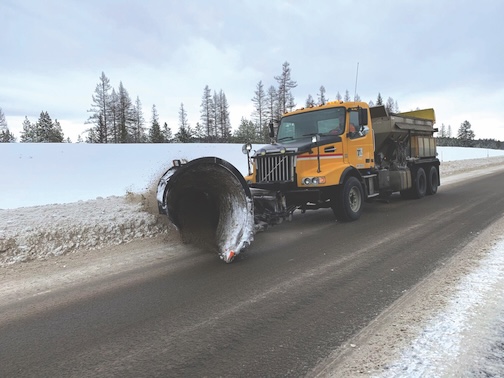Port of Walla Walla mulls second flight out of regional airport
Published 8:00 am Monday, April 17, 2023

- The afternoon Alaska Airlines flight sits outside the Walla Walla Regional Airport on Friday, April 1, 2022. Walla Walla Regional Airport is getting a second daily flight to Seattle under an agreement approved by Port of Walla Walla Commissioners at a special meeting.
WALLA WALLA, Wash. — Port of Walla Walla commissioners are exploring the possibility of adding a second round-trip flight to Seattle, but their primary concern is the added cost.
Trending
Commissioners on Friday, April 7, had a special meeting to discuss various matters, including the air service offered by Alaska Airlines at the Walla Walla Regional Airport.
As a result of a shortage of pilots, Horizon Air, the sister company of Alaska Airlines, reduced its flights at the airport in September 2022 to one arrival and one departure each day.
Patrick Reay, executive director for the Port of Walla Walla, said members of the group have researched how a second flight can be secured for the airport, but there are still questions.
Trending
“This has been an ongoing community discussion,” Reay said at the meeting. “We’ve pushed on our provider partner, Alaska Air, since we’ve been reduced down to one flight, on what is it going to take to get a second flight or resume pre-pandemic service. It’s been an ongoing discussion, a frustrating discussion, but I believe there’s light at the end of the tunnel, so to speak.”
He explained some of the options the commercial air service is looking at in terms of having a second flight. He said the airline could request a revenue guarantee from the local community to reinstate a second flight. He said Alaska Airlines has informed other airports that are also grappling with reduced services.
Reay said the industrywide challenges faced by airlines, such as pilot shortages, plane availability and contracts with other providers, combined with the pandemic, have resulted in a problematic situation.
The overarching questions are: What would be the cost involved in restoring a second flight? And what would it take?
Load factor is one metric that is used to determine whether a second flight is needed. The load factor is the measure of how full planes are during a given period. For the Walla Walla Regional Airport, the average year to date load factor discussed at last month’s economic development informational meeting was 78%.
The other factor could be the dollar and cents cost to pay for a jet to land at the airport.
Reay clarified that because of Federal Aviation Administration’s rules and regulations, airport funds cannot be used to subsidize or endorse any expansion of Alaska Airlines services because the Port owns and operates the regional airport, and sponsorships cannot be provided by aviation organizations.
The Port does not know which metric the airline service will use or what the benchmarks will be for load factor.
Ron Peck, who is interim executive director for Visit Walla Walla, said the community desperately needs a second flight.
Peck also serves as the co-chairman of the Port’s Air Coalition.
“I know from past board meetings with Visit Walla Walla that we are committed to participating and we believe that it’s important for us,” Peck said during public comment. “I think you all know that the metrics have changed in terms of who’s on that airplane. It used to be substantially more business than leisure. That’s shifted.”
Peck said in discussing the needs of added flight service, both business needs and leisure needs should be addressed.
“I think the leisure market is going to continue to be important to this community,” he said.
Peck said there could be a way to measure what economic impact a second flight could bring to Walla Walla by looking at previous records when there were two flights and compare it to the current percentage of traffic.
“As we move forward in terms of working with and making the community aware, we can identify what we in the industry call a STR report,” Peck said.
An STR report provides market data about the hotel industry. “The lion’s share of our funding comes from lodging taxes. If those lodging taxes go up, guess what? More people are coming,” he said.
Reay said a study is likely needed to demonstrate a revenue guarantee. Before committing taxpayer money to provide it, he emphasized the importance of confirming legal authority — which he said the Port has — and ensuring a wise investment. He said the decision needs careful discussion and direction before any concrete steps are taken.
Another piece to the puzzle would be finding a flight schedule suitable to the needs of the community, both from a leisure and business standpoint.
Peck said he thinks Alaska Airlines should commit to a specific flight time to ensure timely arrival and departure from the airport. He suggested having both morning and evening flights would work for both business and leisure purposes.
“This is important for the community from an economic development standpoint,” he said. “I absolutely believe that (having only) one flight impacts who is coming to this community.”
Port commissioners agreed they need to continue the discussion with Alaska Airlines to land a second flight.









